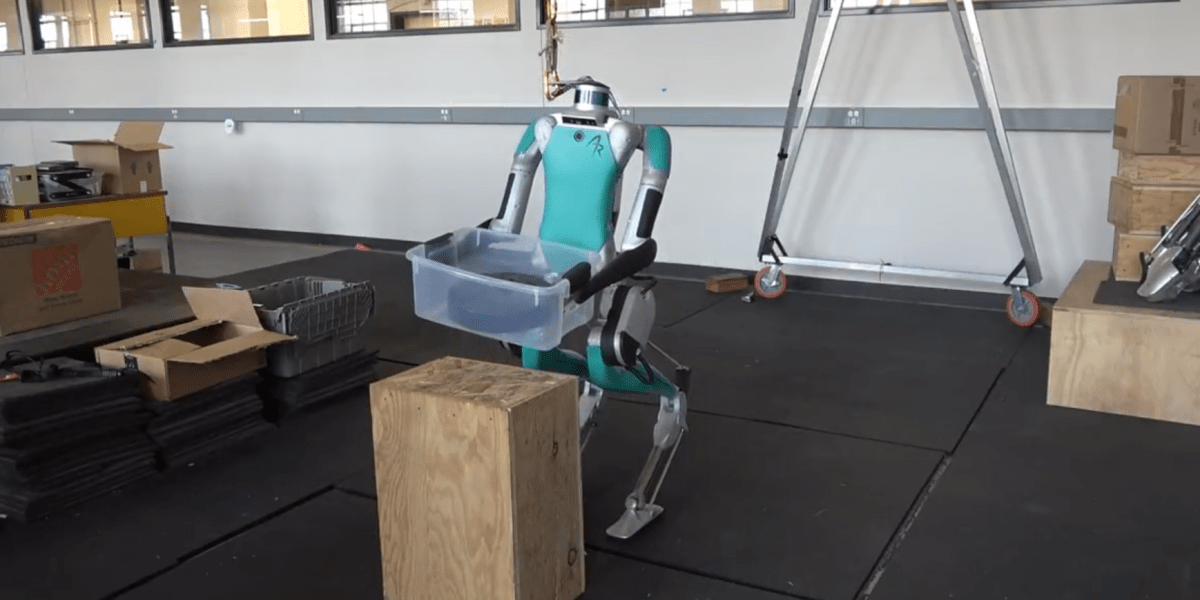

In previous projects, researchers from the University of Oregon had used the same reinforcement learning technique to teach a two-legged robot named Cassie to run. The approach paid off—Cassie became the first robot to run an outdoor 5K before setting a Guinness World Record for the fastest bipedal robot to run 100 meters and mastering the ability to jump from one location to another with ease.
Training robots to behave in athletic ways requires them to develop really complex skills in very narrow environments, says Ilija Radosavovic, a PhD student at Berkleley who trained Digit to carry a wide range of loads and stabilize itself when poked with a stick. “We’re sort of the opposite—focusing on fairly simple skills in broad environments.”
This new wave of research in humanoid robotics is less concerned with speed and ability, and more focused on making machines robust and able to adapt—which is ultimately what’s needed to make them useful in the real world. Humanoid robots remain a relative rarity in work environments, as they often struggle to balance while carrying heavy objects. This is why most robots designed to lift objects of varying weights in factories and warehouses tend to have four legs or larger, more stable bases. But researchers hope to change that by making humanoid robots more reliable using AI techniques.
Reinforcement learning will usher in a “new, much more flexible and faster way for training these types of manipulation skills,” Fern says. He and his team are due to present their findings at ICRA, the International Conference on Robotics and Automation, in Japan next month.
The ultimate goal is for a human to be able to show the robot a video of the desired task, like picking up a box from one shelf and pushing it onto another higher shelf, and then have the robot do it without requiring any further instruction, says Fern.
Getting robots to observe, copy, and quickly learn these kinds of behaviors would be really useful, but it still remains a challenge, says Lerrel Pinto, an assistant professor of computer science at New York University, who was not involved in the research. “If that could be done, I would be very impressed by that,” he says. “These are hard problems.”
24World Media does not take any responsibility of the information you see on this page. The content this page contains is from independent third-party content provider. If you have any concerns regarding the content, please free to write us here: contact@24worldmedia.com

Do you believe the Covid vaccine had negative side effects? VOTE HERE

Latest Google layoffs hit the Flutter and Python groups

‘Women’s rights have been attacked constantly!’

Here’s your chance to own a decommissioned US government supercomputer

AWS S3 storage bucket with unlucky name nearly cost developer $1,300

FTC fines Razer for every cent made selling bogus “N95 grade” RGB masks

Apple confirms bug that is keeping some iPhone alarms from sounding

Roundtables: Inside the Next Era of AI and Hardware

Supplements: Ginkgo biloba boosts memory